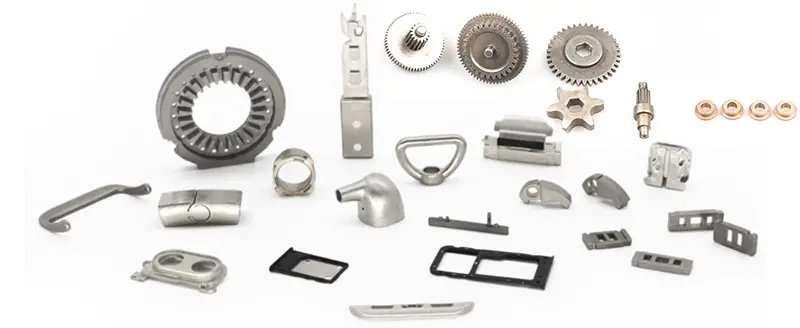Process Flow Of Powder Metallurgy Manufacturing Process And Its Cost Analysis

Powder metallurgy can be divided into several processes in the manufacturing process, and each process involves costs. Under the premise of not reducing the product quality, reasonable cost control has become the main consideration for the current powder metallurgy products. The direct production costs of powder metallurgy parts of Harber powder metallurgy gear manufacturer are divided into five aspects: material, pressing, sintering, mold, and subsequent processing.

1. Sintering cost
The sintering cost varies depending on the sintering process. If infiltration is required, it also includes infiltration cost. Because sintering does not have to heat the sintered matrix metal to the melting point, the energy consumption required is lower than that of the casting process.
2. Subsequent processing cost
Such as finishing, impregnation, metal minor cutting processing, heat treatment or surface treatment (steam treatment, polishing, deburring, shot blasting, etc.). In addition to the direct production costs, the production costs should also include management fees and auxiliary fees. The management fees include major items such as design, technology, and sales. The auxiliary fees include items such as power management, equipment maintenance, and transportation.
3. Metal Mold cost
The original price of the mold depends on the complexity of the mold, and the complexity of the mold is directly related to the complexity of the part. Therefore, the cost should be related to the complexity of the part. Since a set of powder metallurgy molds often produces a large number of parts, the mold material should be selected from materials that can withstand high pressing pressure and powder friction.
4. Metal Material cost
The cost of metal powder is generally higher than the corresponding metal cost in cast form, which is due to factors such as energy consumption required to make metal ingots into powder. Of course, the material utilization rate of powder metallurgy process is very high, so after making products, the total material cost may not be higher than that of parts manufactured by casting and forging processes. The material utilization rate of powder metallurgy final products is generally 95%~98%. The approximate calculation of the raw material cost of metal parts is: per gram of metal material cost × part volume × part density. The material cost should also include lubricants, alloy element additives and other actual raw material costs.
5. Powder Pressing cost
The pressing cost includes machine cost and labor cost. As the tonnage of the press increases, the investment cost of the press increases, and conversely, the productivity decreases. The selection of press size is based on the product of the large cross-sectional area perpendicular to the pressing direction and the unit pressing pressure. The unit pressing pressure is related to the pressing density of the part. In iron-based parts, low-density unit pressing pressure is generally 400MPa, and medium-high density is 600~700MPa. The press cost is also related to the degree of automation and pressing rate of the press. Although the operating cycle of powder metallurgy presses is slower than that of stamping parts, it is faster than plastic molding presses and requires less equipment.
Subsequent processing,testing and packaging costs
Finishing is the last procedure before delivery, the cost is often overlooked, but it is contribution for the whole production cost calculation. Cost of subsequent processing is may very high, for some PIM parts, follow-up processing cost is higher than all the PIM process. Machining, heat treatment, plating gold-plated (especially), and other follow-up processing will increase the added value of products, but will consume valuable resources.
Packaging costs often overlooked by the customer. This may be a paper tube,also may be a single package, makes easy to automatic assembly. This will increase the cost of production.
Inspection is another part of the final cost. Validation test including from 100% of the size measurement to periodically check. These parts need to be blessing to each of the test operation, so that there will be total cost. Therefore, it is desirable to extract random sample, obtained statistical distribution, rather than 100% inspection. Because the content is not clear, so the customer need to discuss related costs associated with any requirements.





